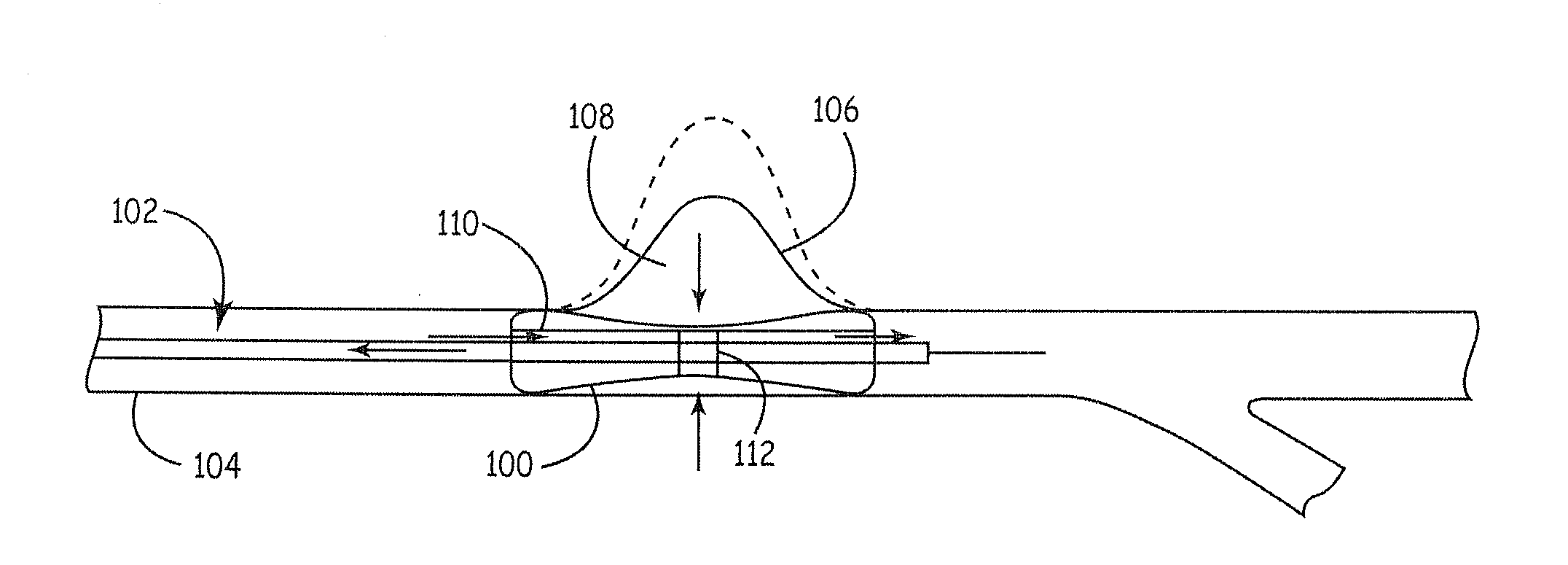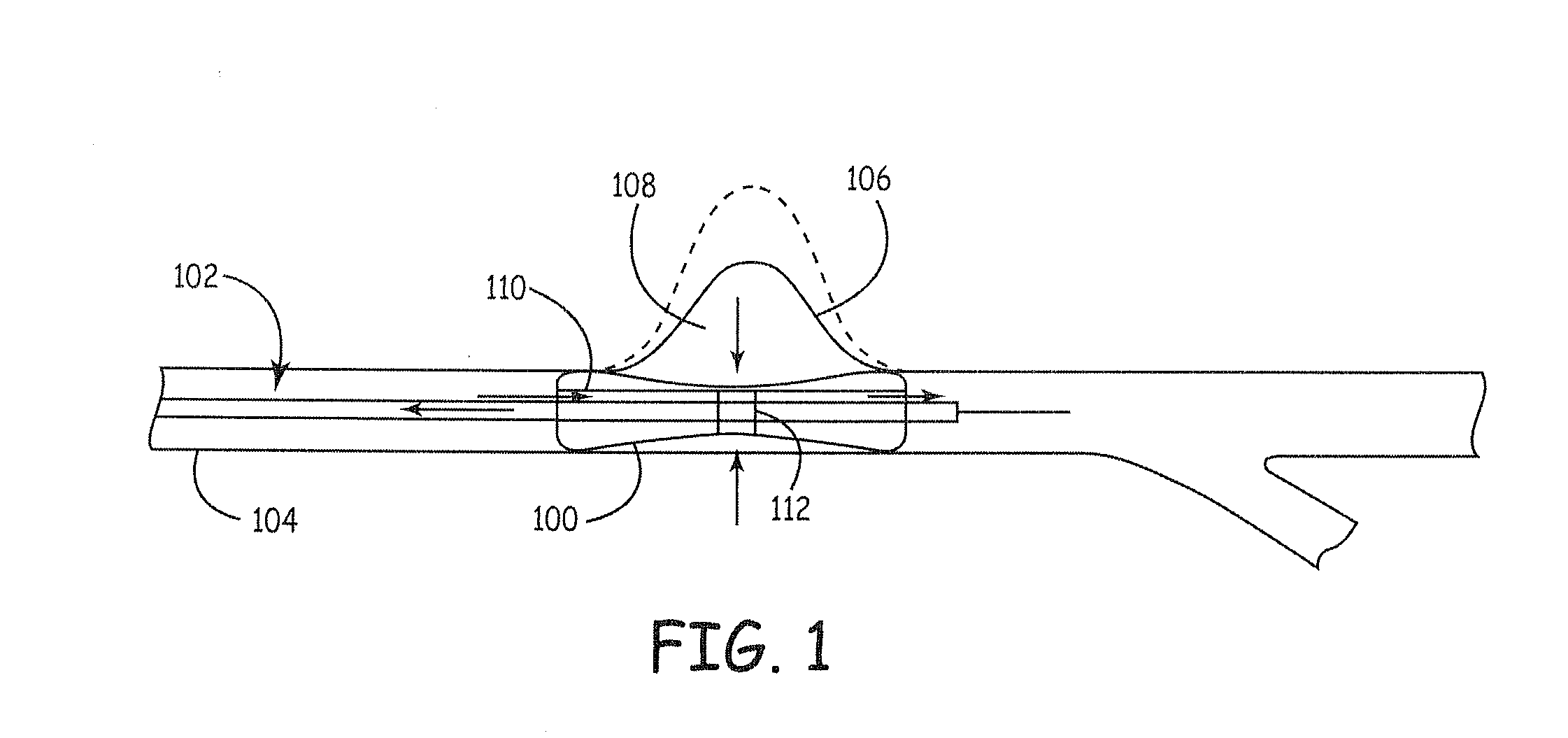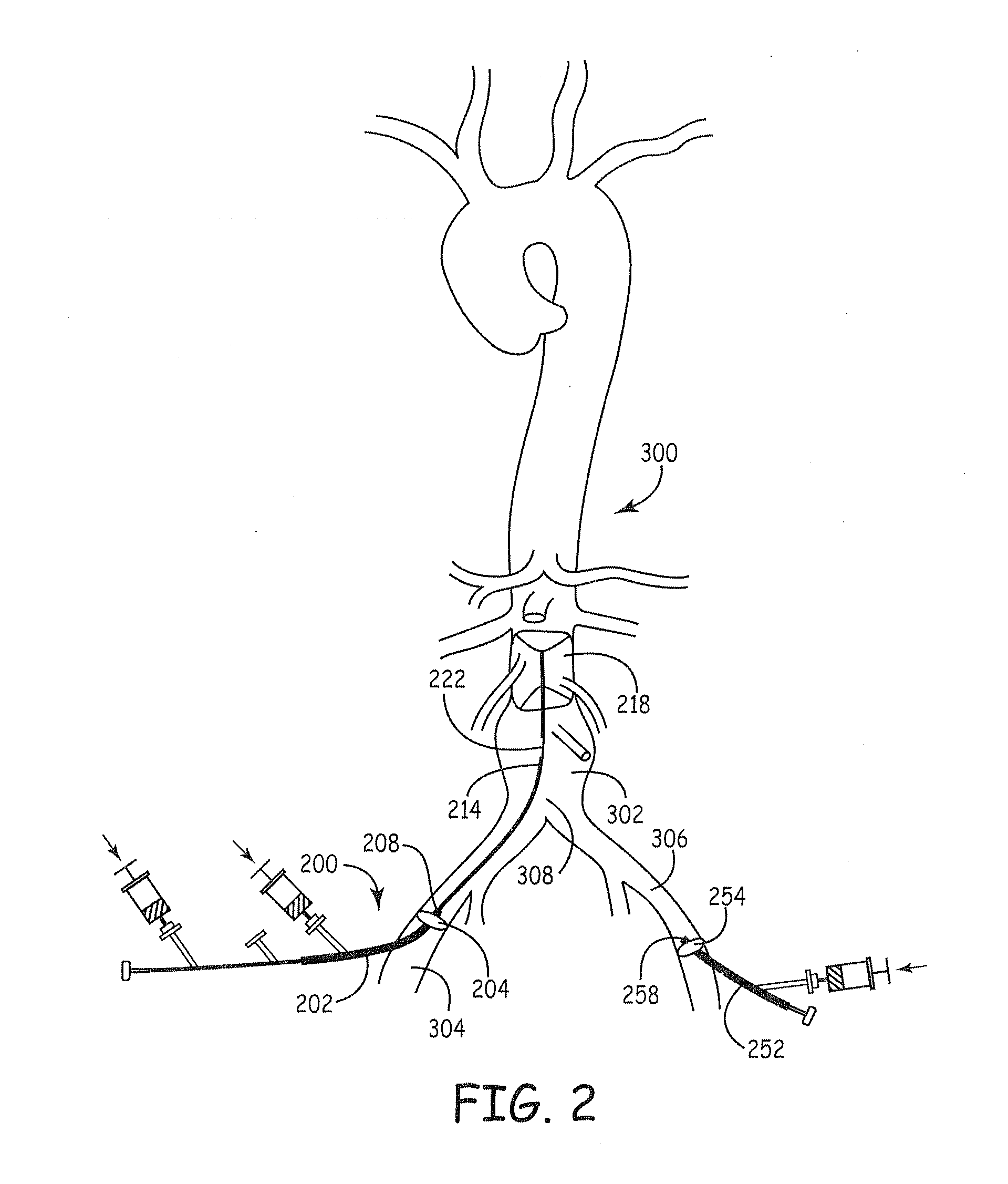Compositions for tissue stabilization
a tissue stabilization and composition technology, applied in the direction of drug compositions, prosthesis, cardiovascular disorders, etc., can solve the problems of large health risks, massive bleeding, and large risk to health, and achieve the effects of reducing the risk of strok
- Summary
- Abstract
- Description
- Claims
- Application Information
AI Technical Summary
Benefits of technology
Problems solved by technology
Method used
Image
Examples
example 1
Opening Angle Test to Determine Mechanical Property of the Treated Tissue
[0125]Porcine aorta obtained from a USDA approved slaughterhouse were cut transversely into ring segments approximately 1 cm in height as shown in FIG. 3A. The rings were left untreated (fresh sample) or treated with glutaraldehyde (Glut), PGG, or Glut then PGG (Glut / PGG). Glut treatment was performed with 0.6% (w / v) Glut for 1 day, and then 0.2% (w / v) Glut for 7 days, all done at room temperature; PGG treatment was performed with 0.15% (w / v) PGG for 4 days at 37° C. Glut / PGG treatment was performed with 0.6% (w / v) Glut for 1 day, and then 0.2% (w / v) Glut for 7 days at room temperature followed by 0.15% (w / v) PGG for 4 days at 37° C.
[0126]After treatments were completed, the aortic rings were immersed in water with the cross section of the aorta facing upward, allowing free movement of the aortic tissue. The aortic rings were cut once in the radial direction, as shown in FIG. 3A and allowed to “relax” and open ...
example 2
Tissue Resistance to Collagenase Degradation after Treatment
[0127]Tissue resistance to collagenase degradation after treatment with various reagents is discussed. Specifically, samples of porcine aortic wall were either left untreated (fresh) or treated with Glut alone or Glut followed by tannic acid (TA). Glut treatment was performed with 0.6% (w / v) Glut for 1 day, and then 0.2% (w / v) Glut for 7 days at room temperature; Glut / TA treatment was performed with 0.6% (w / v) Glut for 1 day, and then 0.2% (w / v) Glut for 7 days at room temperature followed by 0.15% (w / v) TA for 4 days at 37° C. The treated samples were rinsed 3 times (1 hour each) in 100 mL water, and lyophilized to record dry weight. Samples with the amount of ˜15 to 25 mg dry weight were immersed in 1.2 mL of type I collagenase (150 U / mL) dissolved in 50 mM Tris buffer, 10 mM CaCl2, pH 7.4, and incubated at 37° C. with orbital shaking at 650 rpm for 24 hours. Following this exposure to collagenase, samples were centrifuge...
example 3
Thermal Denaturation Temperature of Treated Tissues
[0129]The thermal denaturation temperatures (Td), common indicators of collagen crosslinking density, were measured in samples from treatment groups using a differential scanning calorimeter (DSC) (Perkin-Elmer DSC 7; Boston, Mass.). The samples were treated under the conditions outlined in Example 2. The treated aortic wall samples (approximately 2 mm×2 mm) were sealed in aluminum pans, heated at a rate of 10° C. per minute from 20° C. to 110° C. Td was determined as the temperature measured at the endothermic peak. This observed endothermic peak occurs at the temperature where collagen fibers unravel or denature, resulting in a measurable release of energy. Therefore, a higher denaturation temperature correlates into improved collagen crosslinking. The Td data from the samples are, recorded in Table 1. According to the data in Table 1, fresh untreated sample has Td that is significantly lower than the Glut treated sample, indicati...
PUM
| Property | Measurement | Unit |
|---|---|---|
| diameter | aaaaa | aaaaa |
| diameter | aaaaa | aaaaa |
| particle diameter | aaaaa | aaaaa |
Abstract
Description
Claims
Application Information
 Login to view more
Login to view more - R&D Engineer
- R&D Manager
- IP Professional
- Industry Leading Data Capabilities
- Powerful AI technology
- Patent DNA Extraction
Browse by: Latest US Patents, China's latest patents, Technical Efficacy Thesaurus, Application Domain, Technology Topic.
© 2024 PatSnap. All rights reserved.Legal|Privacy policy|Modern Slavery Act Transparency Statement|Sitemap



